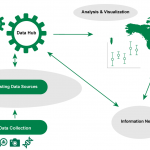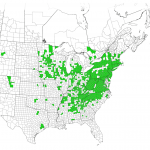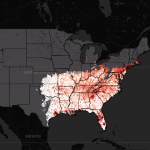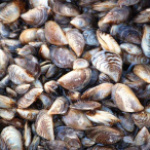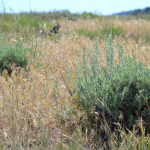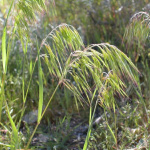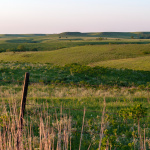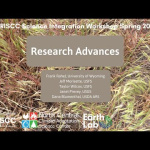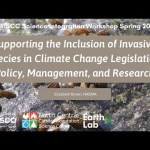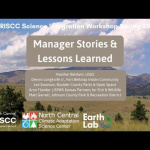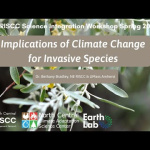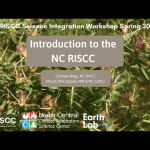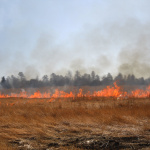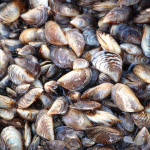Siren
Tool overview: An emerging, web-based resource for invasive species information sharing and collaboration that will serve at the center of the National EDRR Framework. The goals of SIREN are to stand as a long-term hub to improve access to existing and emerging information resources and expand collaboration to facilitate early detection and rapid response to biological threats across the nation.
EDDMapS
Tool overview: An existing, web-based tool that aggregates observation data to provide a database of invasive species and pest population information for the US and Canada. EDDMapS also includes a range shift listing tool that provides information for selected species under future climate conditions which can aid invasive species prevention and early detection.
INHABIT
Tool overview: An existing, web-based tool that uses species distribution modeling to provide spatial and statistical summaries and visualizations of habitat suitability for numerous invasive plant species across the continental US. This tool is freely accessible and provides managers with information to inform prevention and management strategies for invasive plants.
Double Trouble: Understanding risks from invasive species and climate change
Summary: Individually, invasive species and climate change are major threats to global ecosystems. Together they create new challenges for effective management. Management strategies need to be designed to respond to this double trouble, and we need to understand how these two forms of global change interact.
Read Double Trouble (pdf version) here.
Published 5/16/22
The RAD Framework to Address Ecological Transformations
Summary: Ecological transformations are persistent shifts in multiple components of an ecosystem that are not easily reversed and they make it increasingly hard to maintain ecosystem conditions based on historical baselines. The RAD (resist, accept, direct) framework offers alternative management approaches in addition to those aimed at maintaining historical conditions, including accepting ecosystem transformations or directing systems towards novel conditions.
Invasion Potential
Summary: As Earth’s climate changes, it alters the characteristics of ecosystems which can stress native species, increasing a community’s susceptibility to novel invasions. This can increase the invasion potential of an invasive plant species or region. Whether or not the invasion potential is realized depends on several factors including species interactions (which are difficult to quantify) and the traits of the invasive and native species in the community.
Will Climate Change Promote Future Invasions?
Bellard, C., Thuiller, W., Leroy, B., Genovesi, P., Bakkenes, M., & Courchamp, F. (2013). Will climate change promote future invasions? Global Change Biology, 19(12), 3740–3748. https://doi.org/10.1111/gcb.12344
Summary:
The Invasive Grass-Fire Cycle in the North Central U.S.
Summary: States in the North Central region have been invaded by grass species capable of altering fire regimes and creating self-perpetuating 'grass-fire cycles'. Under climate change, these grasses may interact with drought and fire to burn more and exclude native species. Managers can plan for these interactions and create collaborative communities to address these complex challenges.
Double Trouble: Understanding risks from invasive species and climate change
Summary: Individually, invasive species and climate change are major threats to global ecosystems. Together they create new challenges for effective management. Management strategies need to be designed to respond to this double trouble, and we need to understand how these two forms of global change interact.
Read Double Trouble (pdf version) here.
Published 5/16/22
